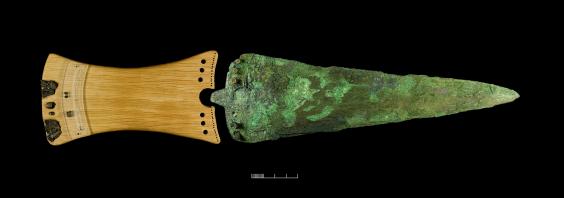Stonehenge
By: Kelsey Daniels
Brief Overview
Stonehenge has been viewed for centuries as one of Britain's most influential and impactful monuments. As the center or basis of the World Heritage Site, it contains a vast amount of history and attracts more than 800,000 tourists every year. While it is believed that the start of Stonehenge began 5,000 years ago, modern day Stonehenge is a compilation of multiple constructions and many years of work. While it started out small, Stonehenge has grown substantially and it now a compilation of multiple stone types and formations, including sarens and bluestones. Over the years there has been some decay along with the growth, causing previously famous attributes to fall completely. It is thought that Neolithic Britons began the construction of Stonehenge and it carried out through generations, with different beliefs and thoughts arising along the way. This landmark lies in a concentric, circular pattern, with ditches surrounding the stones. These patterns are what have led people, specifically pseduoarchaeologists, to believe that a greater being created stonehenge. [1] [2]
Artifacts
There are many ideas about how Stonehenge came about and about who influenced it, but there are also many different ideas about what lies at the site. There have been stone tools found that lead to talk about how it was built, there are thoughts that aliens sent the stones down, and there is also talk about treasure being buried underneath the site. Regardless of what the actual truth of the creation of Stonehenge is, many things have been found over the course of multiple excavations and a lot of artifacts are on display at places like the British Museum. things like metal shards from an unidentifiable source, Egyptian beads, and gold artifacts have been found at the site. Archaeological dating shows that artifacts go all the way back to the Bronze Age. Along with stone tools, both at and around the main site, archaeologists have found wooden beams and posts in the ground. Many thoughts arose with this discovery, but the most accepted theory is that these posts were probably used during rituals. They make have been used or carved, to help the people worship their gods and deities. [3] [4] [2] [5]
 Stone tool found under stone mound.
Stone tool found under stone mound.
 Multiple shapes and sizes of arrowheads found in an excavation.
Multiple shapes and sizes of arrowheads found in an excavation.
Excavation
The first evidential excavation dates back to the 17th century. King James hired an architect to analyze and study the site. This lead to the argument or idea that Stonehenge was built by Romans. Moving into the 18th century, a man named William Stukeley claimed that Stonehenge was a Druid monument. Throughout the years, many excavations have taken place, leading to new discoveries such as burials, found artifacts of lifestyle and culture, and much more. Because of the vast amount of land and sites at Stonehenge, there is no one date that excavation started at Stonehenge. Each specific area and plain was excavated starting at different dates and multiple people have visited each place, on more than one occasion. What has been noticed by many is that the abundance of mounds served burial sites for the populations that lived in the area. Sacrifices were made and rituals took place. There has been graves found that show this place was viewed as sacred. Bodies were buried with respect, showing dignity was not stripped from the deceased. [3] [5]
Pseudoarchaeology
While it is said to believe that Stonehenge is thousands of years old, there is evidence that it is much younger than we are told to believe. Also, the artifacts that we are supposed to find near Stonehenge, that hint at life existing at the site, are never really found. If they are, they were most likely placed there as false evidence. What starts or essentially, sparks, the main pseudoarchaeological beliefs behind Stonehenge, the idea that Aliens came down and arranged the stones, is that humans could not physically lift and arrange the stones themselves and there was no technology or tools available at the time. [6]
Deconstructing Claims/Evidence
There has been a substantial amount of work done by archaeologists to deconstruct the theories that have arisen about stonehenge. Saying that aliens had to be responsible, due to the inability for humans to move stones that large, goes back to the misconception of age and time. While it is true that the sites surrounding Stonehenge can be dated back to 10,000 years ago, Stonehenge itself was only build 5,000 or so years ago. With this, comes the knowledge of the Ice Age. Knowing when the last Ice Age occurred, helps to deconstruct this. Knowing that Stonehenge is only 4,000-5,000 years old, the possibility that glaciers could've moved stones close to the site, disrupts and possibly gets rid of the need for people to carry these heavy stones a long way all together. [7]
Resources
- ↑ “Stonehenge.” Description of Stonehenge | English Heritage, English Heritage, www.english-heritage.org.uk/visit/places/stonehenge/history/description/#.
- ↑ 2.0 2.1 “English Heritage.” Research on Stonehenge | English Heritage, English Heritage, www.english-heritage.org.uk/visit/places/stonehenge/history/research/.
- ↑ 3.0 3.1 Klein, Christopher. “‘Superhenge’ Excavation Reveals Big Surprise.” History.com, A&E Television Networks, 17 Aug. 2016, www.history.com/news/superhenge-excavation-reveals-big-surprise.
- ↑ Caesar, Ed. “What Lies Beneath Stonehenge?” Smithsonian.com, Smithsonian Institution, 1 Sept. 2014, www.smithsonianmag.com/history/what-lies-beneath-Stonehenge-180952437/.
- ↑ 5.0 5.1 Mariaw. “Secret Stonehenge: Mounds, Artifacts, and Intrigue.” Ancient Origins, Ancient Origins, 5 Aug. 2017, www.ancient-origins.net/ancient-places-europe/secret-stonehenge-mounds-artifacts-and-intrigue-008552.
- ↑ “Pseudoarchaeology Behind the Site.” Americas Stonehenge, America's Stonehenge, 2017, pseudoarchaeology.leadr.msu.edu/mysteryhill/psuedoarchaeology-behind-the-site/.
- ↑ Jarus, Owen. “Stonehenge: Facts & Theories About Mysterious Monument.” LiveScience, Purch, 18 Aug. 2017, www.livescience.com/22427-stonehenge-facts.html.
